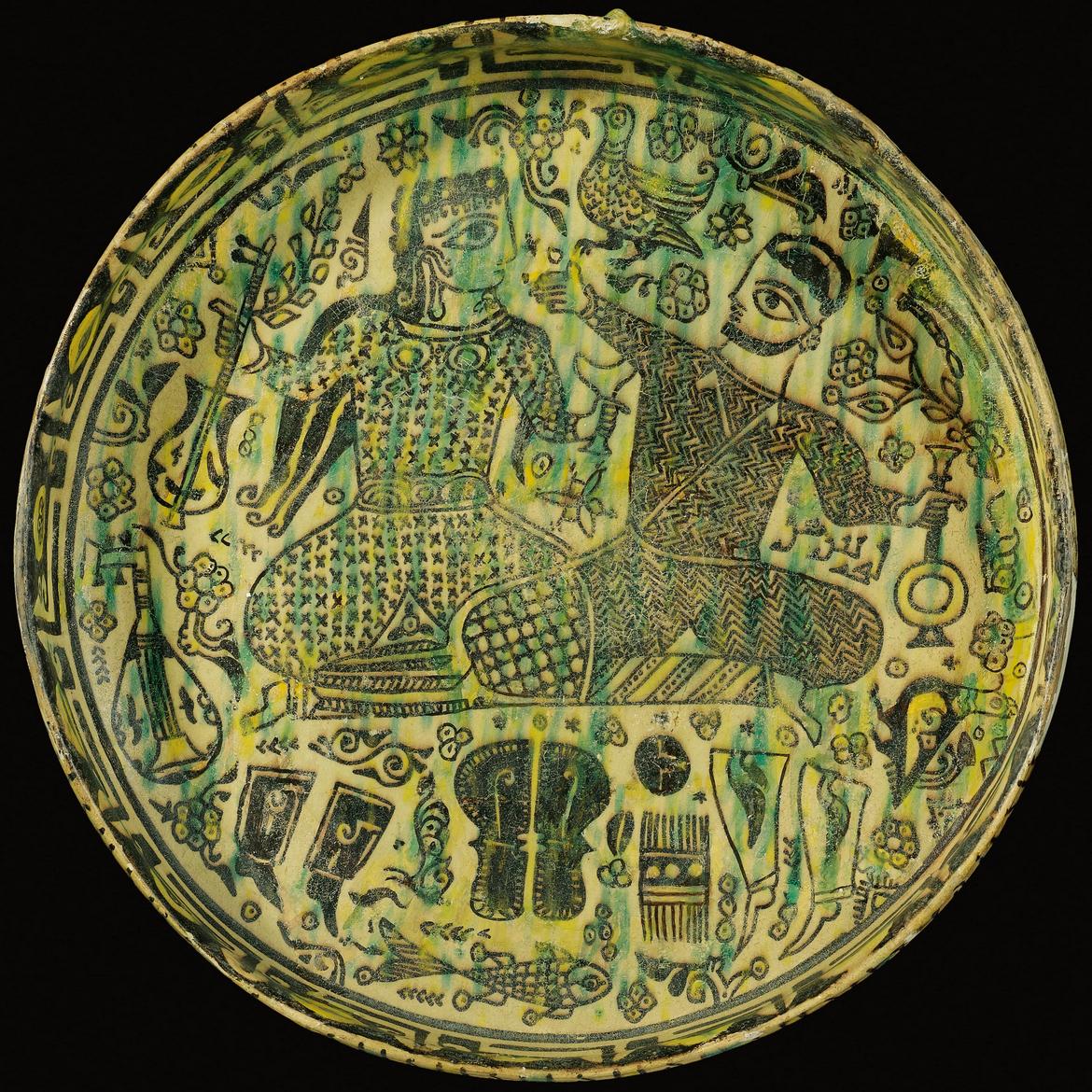
Try Amazon Audible Premium Plus and Get Up to Two Free Audiobooks
Bowl with Musicians Drinking, 10th Century, Nishapur, Iran
Sothebys



A Large Nishapur Plate Depicting Two Seated Figures, Eastern Persia, 10th century
of shallow form with flat base, straight vertical sides and no foot, painted to the interior in manganese-purple, copper-green and orpiment-yellow with two seated figures positioned in the centre in a convivial setting, one holding a bottle and the other a stringed instrument and a cup, surrounded by ornamental and symbolic motifs, grapevines, flowerheads, leaves, musical instruments, two birds, a fish, two pairs of boots and a comb, the walls decorated around the interior rim with a kufic frieze and on the exterior with vertical lines and chain pattern
34.6cm. diam
inscriptions
Inside, in Persian:
nush kon!
'Drink!'
Around the inner rim, repetition of two letters, possibly: laka
'For you'
This exceptional example of a "buffware" plate, probably from Nishapur, is of considerable inconographic interest. Richard Ettinghausen was the first to argue that the raffish and courtly figures depicted on "buffwares" mark the vestiges of Sasanian iconography in which wealth and power is projected through symbols of hunting, feasting and carousing. Teresa Fitzherbert added to the debate by arguing that although the pictorial forms may draw on Sassanian models, the subject matter needs to be interpreted in the context of local festivals, customs and traditions, such as that of the futuwwa, a group of select young men, usually celibate, who followed a strict code of chivalry and engaged in prescribed practices and initiation rites; one such custom was the wearing of trousers and Parthian-style boots like the figures depicted here (see T. Fitzherbert, unpublished MA dissertation in the Bodleian Library, Oxford). The couple shown appear to be male and female suggesting that, in this instance, the subject may be that of a marriage or betrothal scene.
These figural motifs and others that appear on tenth-century "buffware" have been unflatteringly, and unfairly, labelled as "folkish" due to the lively and boisterous designs which contrast so strongly to other ceramic wares from the area with their controlled colouration and empty spaces. The "buffwares" use a technique that saw green and yellow pigments applied directly to the clay body (sometimes a slip ground is used) over which a thin glaze was poured. Although Nishapur produced a large number of "buffware" pieces, other centres of production such as Merv and Afrasiyab used the same techniques (Watson 2004, pp.247-251).
Sothebys, Arts Of The Islamic World, sale 2012, Lot 517